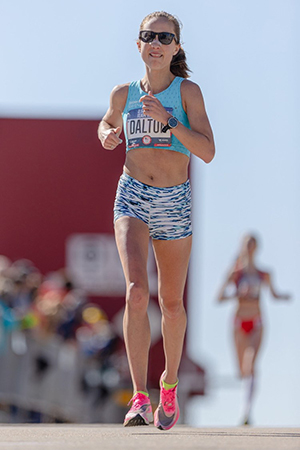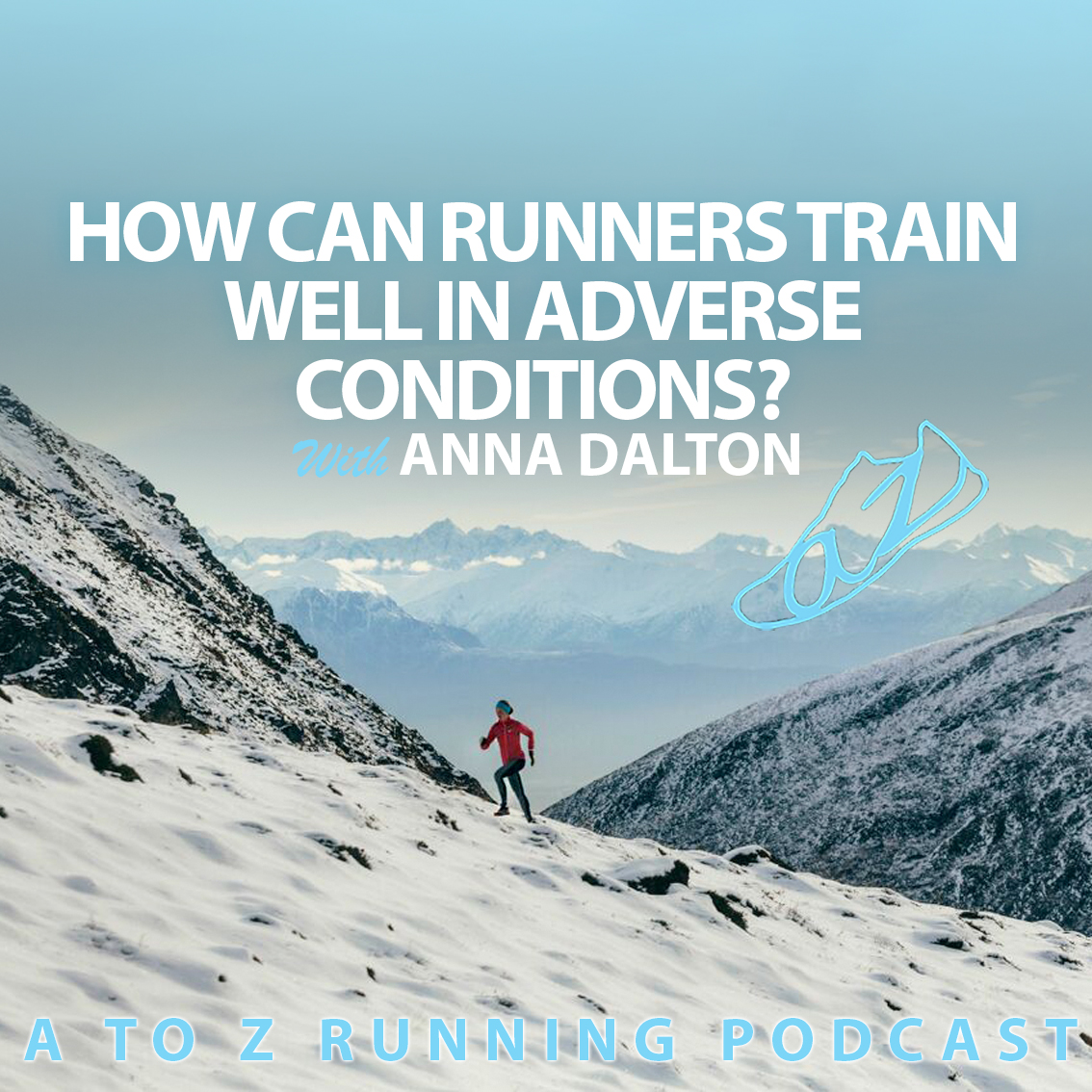LISTEN
INTRO
- Follow and Subscribe (on YouTube or your favorite podcast platform)
- Listener question: Pete Mumbower asks, how many shoes do you typically have in rotation? Any benefit to rotating multiple?

- No feature product this week, but don’t forget you can get 10% OFF at Pro-Tec Athletics with discount code ATOZ10
WORLD OF RUNNING
If you need to get caught up on the world of running, check out last week’s episode, “The Best of Running 2020.”
USATF Indoor Championships Officially Cancelled
- The 2021 USATF related events and meets are also cancelled
- World Athletics announced in december that the World Championship Indoor Championship will occur in 2023.
Kate Grace (Listen to our episode with Olympian Kate Grace)
- Staying with Nike, but leaving BTC
Rumors of Kenya (and maybe others) considering changes to marathon team
MAIN TOPIC: How can runners train well in adverse conditions?
Training well in adverse conditions is critical to maintaining consistency in training which translates to success in running. There are a variety of factors including conditions like unstable running surfaces and the cold temperatures. Flexibility with a strong arm of determination can help a runner intelligently navigate less than ideal weather and running conditions. Andi and Zach interview Alaskan Olympic Trials Marathon runner Anna Dalton to further discuss how to progress when the elements seem to be less than favorable.
Before the interview we discuss conditions as a factor, we talk through some of the article, Running on Unstable Surfaces- What challenges to expect & how to adapt.
While discussing cold as a factor we mention the Study published on the US National Library of Medicine National Institute of Health which revealed the following information:
-
- The innermost layer, which is in direct contact with the skin, should wick moisture away from the body to maintain an insulating air layer next to the skin and transfer water to outer layers of clothing
- Good base layers include polypropylene, polyester, and synthetic wool. Wool can retain heat even when wet.
- Avoid cotton layers that trap moisture.
- The middle layer or layers are primarily for insulation and should be made of a material like fleece or wool.
- The number of layers is dictated by the temperature and exertion level.
- As exercise intensity increases, the amount of clothing insulation needed to maintain body heat at a given temperature decreases.
- The outer vapor layer must allow moisture transfer, allow ventilation, and protect against wind and rain.
- The innermost layer, which is in direct contact with the skin, should wick moisture away from the body to maintain an insulating air layer next to the skin and transfer water to outer layers of clothing
About our guest: Anna Dalton
Olympic Trials Marathoner, Mountain Marathoner, 50k
Who better to talk to about experience training well through adverse conditions, than Anna Dalton? Anna grew up in Alaska beginning her running at an early age of 5 years old with her mother, according to an article by Anchorage Daily News. In February of 2020, Anna Dalton arrived at her long time goal of becoming an Olympic Trials Marathoner. While living in Alaska, she put in 90 mile weeks in the elements preparing for her Olympic Trials Marathon with the Alaska Endurance Project. She qualified for the trials in a time of 2:44:24. Anna knows what it is like to navigate adverse conditions. Notably tough and prepared in all conditions, Anna placed ninth at Mount Marathon, fourth at Montana’s Run the Rut 50K and fourth at the USA Track & Field trail marathon championships in Utah. Anna is also the owner of an impressive half marathon time of 1:17:05.
Keep following Anna Dalton as she pursues training at a high level:
Instagram:@annaedalt
Twitter:@annaedalt




Leave a Reply
Want to join the discussion?Feel free to contribute!